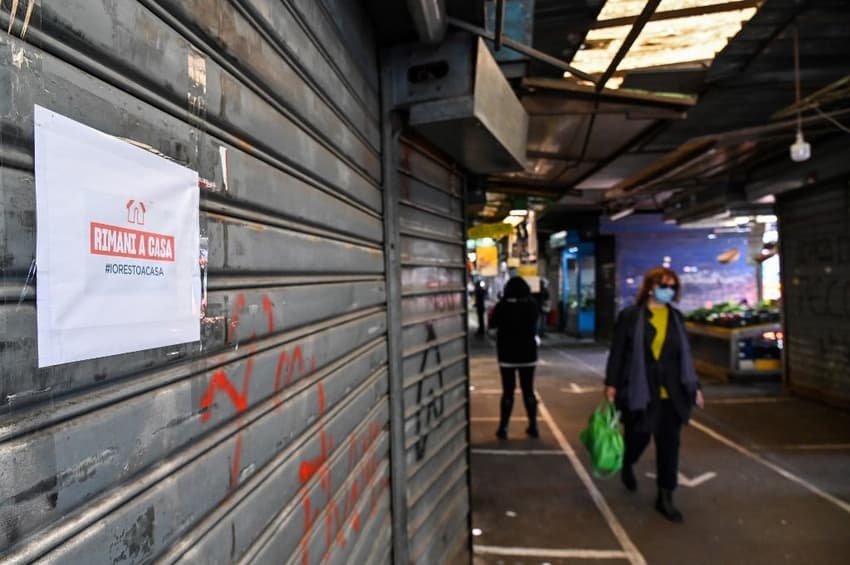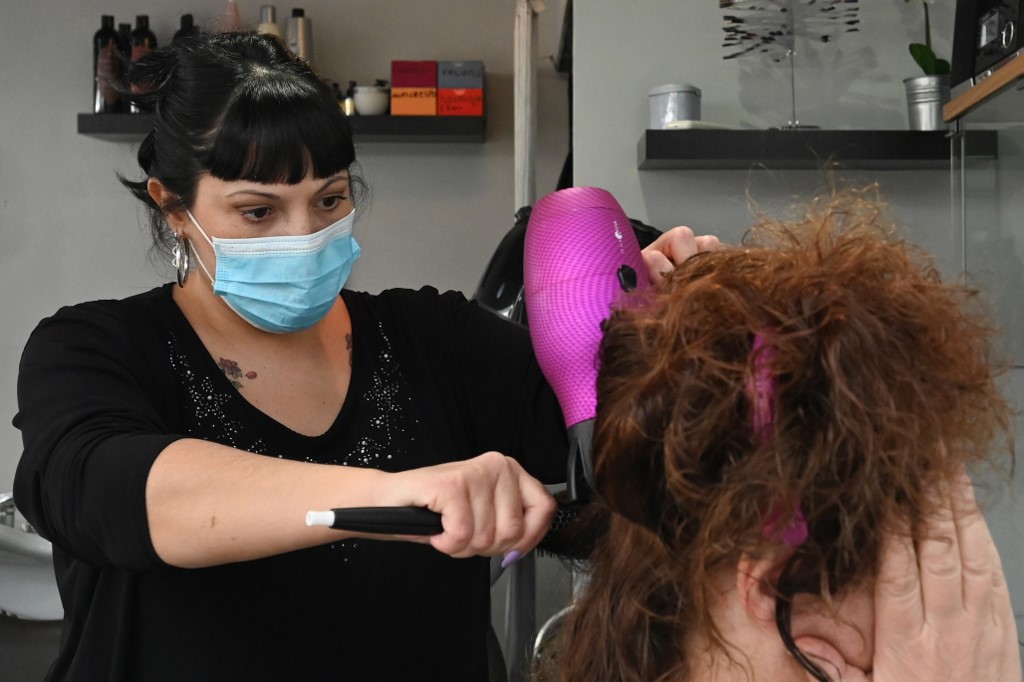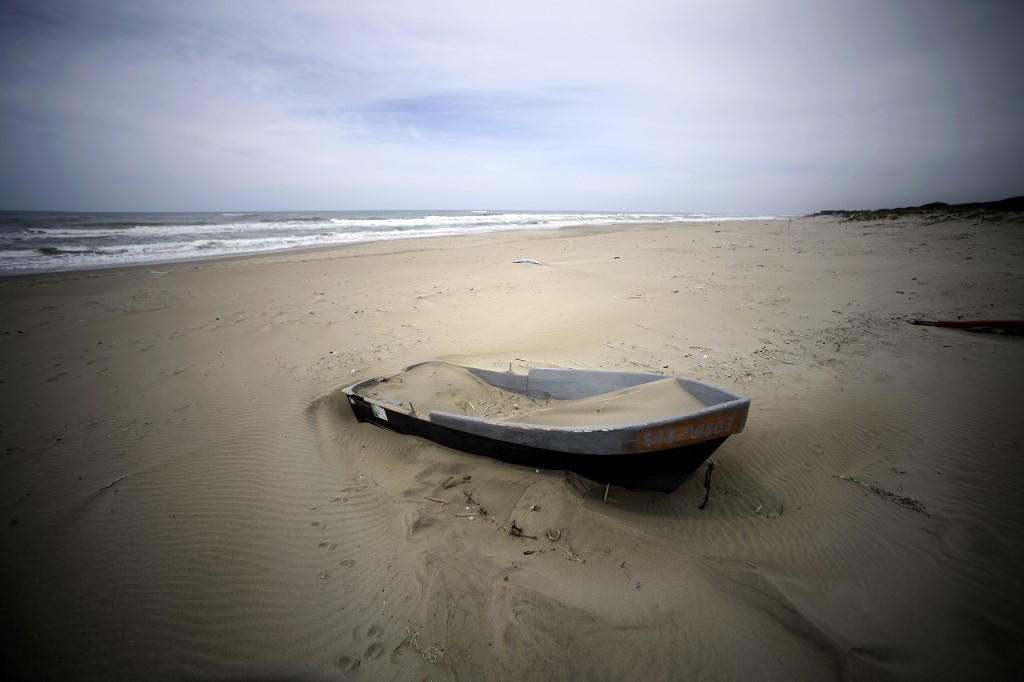Why some Italian regions have reopened sooner than others

In some parts of Italy, you can already go to the hairdresser, eat at a restaurant or visit your second home – yet in others, even taking a stroll is officially discouraged. Here's where and why the rules are so different.
Each of Italy's 20 regions has its own government, and each of those has the power to adapt national Covid-19 lockdown rules within their own territory.
During Phase One of Italy's coronavirus quarantine, regional governors mostly used those powers to tighten restrictions – upping the maximum fine for unauthorised travel, for instance, setting a 200-metre limit on exercise, or making face masks compulsory anywhere in public.
READ ALSO:
-
Why lockdown rules aren't always the same around Italy
-
Q&A: Italy's new rules on going outside in lockdown phase two
-
Why the partial end of lockdown in Italy isn't as good as you'd imagine
But now that Italy is officially in Phase Two, some local governments are opting to relax the rules faster than the central government has advised, even if ministers in Rome are warning them against it.
On May 11th, the province of Alto Adige (South Tyrol) became the first to do away with 'autodichiarazione' forms to justify outings and reopened restaurants, bars, hairdressers, libraries and museums, which remain shuttered almost everywhere else in Italy. Local shops of all kinds – no longer just supermarkets, pharmacies and other designated retailers – were given the go-ahead to reopen on May 9th.
Yet according to the national government's latest decree, shops, libraries and museums can only reopen from May 18th, while restaurants and beauty salons can't expect to host customers until at least June 1st.
CALENDAR: What will Italy reopen first under new lockdown rules?

Photo: Alberto Pizzoli/AFP
Alto Adige has more power than most to decide its own rules: along the province of Trentino, which makes up the other half of the region of Trentino-Alto Adige/Südtirol, it is one of five Italian regions with special autonomous status, which gives their governments extra constitutional powers and greater control over local laws and money. (The four others are Aosta Valley, Friuli-Venezia Giulia, Sardinia and Sicily.)
"Autonomy, which is always rigorously respected, must be exercised within the context of respecting the universal values guaranteed by our constitution, health chief among them," commented Italy's minister of regional affairs, Francesco Boccia, who expressed concern over Alto Adige's decision.
But other regions are pushing to follow suit. Sardinia has authorised shops and hair salons to reopen from May 11th – though the majority of local mayors refused to sign off on it within their own comuni, according to reports on Monday.
READ ALSO: Italy considers reopening shops earlier following protests
And the regions of Calabria and Veneto are already serving food and drink at bars and restaurants with outdoor seating, despite the fact that the national government says they should remain take-away only for at least three more weeks.
Regions including Veneto and Puglia say people are allowed to travel within the region to carry out work on second homes, boats and allotments, while nationally that's not considered a justification.
Meanwhile the governors of ten regions – Abruzzo, Calabria, Friuli-Venezia Giulia, Liguria, Lombardy, Molise, Piedmont, Sardinia, Umbria and Veneto, as well as the president of Trentino province – have warned they will "act autonomously" if Rome fails to confirm that they can reopen shops, restaurants, salons and beaches as soon the current decree expires on May 17th.

A deserted beach near Rome. Photo: Filippo Monteforte/AFP
Regional affairs minister Boccia will meet regional representatives and health experts on Monday to discuss when restrictions can be lifted, which is expected to vary from region to region.
The Ministry of Health is understood to be evaluating each region's readiness to restart based on three criteria: how far new cases have slowed, how many hospital beds are available, and what capacity is in place to test and trace people who have the virus.
"If infections go down, [regions] will be able to open more things," Boccia said ahead of the meeting. "If infections go up, they'll have to tighten restrictions."
READ ALSO:
-
Which Italian regions will be first to beat the coronavirus?
-
Milan is a ticking coronavirus 'bomb' under phase two, virologist warns
-
Could Italy's abandoned villages be revived after the coronavirus outbreak?
That indicates that the picture will continue to look different from region to region as Italy gradually makes its way out of lockdown, with parts of the country with fewer cases potentially free to restart ahead of the worst-affected areas like Lombardy.
Even within regions, some decisions rest with the local councils of Italy's nearly 8,000 municipalities. Mayors can choose to reject the extra freedom offered them by their regional government, like many of those in Sardinia have done by keeping shops closed.
For those of us who live in Italy, that means keeping up with not only the national rules, but those of our relevant regione and comune too. Confusing, yes, but for the time being, inevitable.
Comments
See Also
Each of Italy's 20 regions has its own government, and each of those has the power to adapt national Covid-19 lockdown rules within their own territory.
During Phase One of Italy's coronavirus quarantine, regional governors mostly used those powers to tighten restrictions – upping the maximum fine for unauthorised travel, for instance, setting a 200-metre limit on exercise, or making face masks compulsory anywhere in public.
READ ALSO:
- Why lockdown rules aren't always the same around Italy
- Q&A: Italy's new rules on going outside in lockdown phase two
- Why the partial end of lockdown in Italy isn't as good as you'd imagine
But now that Italy is officially in Phase Two, some local governments are opting to relax the rules faster than the central government has advised, even if ministers in Rome are warning them against it.
On May 11th, the province of Alto Adige (South Tyrol) became the first to do away with 'autodichiarazione' forms to justify outings and reopened restaurants, bars, hairdressers, libraries and museums, which remain shuttered almost everywhere else in Italy. Local shops of all kinds – no longer just supermarkets, pharmacies and other designated retailers – were given the go-ahead to reopen on May 9th.
Yet according to the national government's latest decree, shops, libraries and museums can only reopen from May 18th, while restaurants and beauty salons can't expect to host customers until at least June 1st.
CALENDAR: What will Italy reopen first under new lockdown rules?

Photo: Alberto Pizzoli/AFP
Alto Adige has more power than most to decide its own rules: along the province of Trentino, which makes up the other half of the region of Trentino-Alto Adige/Südtirol, it is one of five Italian regions with special autonomous status, which gives their governments extra constitutional powers and greater control over local laws and money. (The four others are Aosta Valley, Friuli-Venezia Giulia, Sardinia and Sicily.)
"Autonomy, which is always rigorously respected, must be exercised within the context of respecting the universal values guaranteed by our constitution, health chief among them," commented Italy's minister of regional affairs, Francesco Boccia, who expressed concern over Alto Adige's decision.
But other regions are pushing to follow suit. Sardinia has authorised shops and hair salons to reopen from May 11th – though the majority of local mayors refused to sign off on it within their own comuni, according to reports on Monday.
READ ALSO: Italy considers reopening shops earlier following protests
And the regions of Calabria and Veneto are already serving food and drink at bars and restaurants with outdoor seating, despite the fact that the national government says they should remain take-away only for at least three more weeks.
Regions including Veneto and Puglia say people are allowed to travel within the region to carry out work on second homes, boats and allotments, while nationally that's not considered a justification.
Meanwhile the governors of ten regions – Abruzzo, Calabria, Friuli-Venezia Giulia, Liguria, Lombardy, Molise, Piedmont, Sardinia, Umbria and Veneto, as well as the president of Trentino province – have warned they will "act autonomously" if Rome fails to confirm that they can reopen shops, restaurants, salons and beaches as soon the current decree expires on May 17th.

A deserted beach near Rome. Photo: Filippo Monteforte/AFP
Regional affairs minister Boccia will meet regional representatives and health experts on Monday to discuss when restrictions can be lifted, which is expected to vary from region to region.
The Ministry of Health is understood to be evaluating each region's readiness to restart based on three criteria: how far new cases have slowed, how many hospital beds are available, and what capacity is in place to test and trace people who have the virus.
"If infections go down, [regions] will be able to open more things," Boccia said ahead of the meeting. "If infections go up, they'll have to tighten restrictions."
READ ALSO:
- Which Italian regions will be first to beat the coronavirus?
- Milan is a ticking coronavirus 'bomb' under phase two, virologist warns
- Could Italy's abandoned villages be revived after the coronavirus outbreak?
That indicates that the picture will continue to look different from region to region as Italy gradually makes its way out of lockdown, with parts of the country with fewer cases potentially free to restart ahead of the worst-affected areas like Lombardy.
Even within regions, some decisions rest with the local councils of Italy's nearly 8,000 municipalities. Mayors can choose to reject the extra freedom offered them by their regional government, like many of those in Sardinia have done by keeping shops closed.
For those of us who live in Italy, that means keeping up with not only the national rules, but those of our relevant regione and comune too. Confusing, yes, but for the time being, inevitable.
Join the conversation in our comments section below. Share your own views and experience and if you have a question or suggestion for our journalists then email us at [email protected].
Please keep comments civil, constructive and on topic – and make sure to read our terms of use before getting involved.
Please log in here to leave a comment.